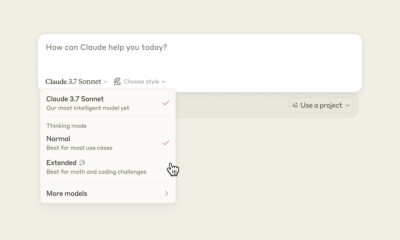News
The Many Benefits Of System Redundancy For An Organization
Discover the numerous advantages of implementing system redundancy for your organization and enhance operational reliability.

The term redundancy is hardly ever used as a positive term or in a positive context. Generally speaking, redundancy refers to an unnecessary repetition or copy of something and has connotations of beating around the bush, especially where writing and speech are concerned.
But let’s forget about that for a moment. From a purely business operations point of view, redundancy is one of the best and most reliable ways to ensure the soundness of your critical infrastructure. It helps ensure your networks are running the way they should: free of any disruption.
With people’s patience for downtime continually wearing thin and its costs constantly on the rise, organizations need to make sure that they are minimizing downtime as much as possible. Thanks to redundant systems, you can ensure that downtime, both planned and unplanned, isn’t as big of a headache as it would be otherwise. But that’s not all; redundant systems provide organizations with a host of other benefits.
What Is System Redundancy?
System redundancy refers to the duplication of critical components and infrastructure that can be used as a fallback in case of failure with the primary critical infrastructure. These backup systems are known as redundant systems.
Types Of Redundancy
System redundancy is classified into three main categories:
- Hardware Redundancy: This is the duplication of critical hardware assets such as servers and data centers. It can also include duplication of power sources and network components.
- Software Redundancy: This involves running different copies or instances of software that is critical to the infrastructure on various devices and servers.
- Data Redundancy: This refers to making multiple copies of critical data and storing it in different locations within the same storage system or even a different storage system entirely.
How Does System Redundancy Help?
Increased Reliability
Redundant systems function as a backup for your critical infrastructure. This means you have assets and other systems in place that are primed and ready to take over promptly in case of failure in your primary asset infrastructure, greatly enhancing your fault tolerance. This is an especially effective way to ensure your systems are operating as intended, even when there is a failure. Redundant systems can significantly reduce downtime and ensure uninterrupted business continuity.
Improved Performance
Redundant systems don’t exist to serve merely as backups. Implementing redundancy into your critical infrastructure provides you with a lot more resources to work with. This enables you to improve performance by spreading the workload across multiple devices during periods of heavy load, resulting in reduced latency and optimal performance levels.
Where network performance is concerned, redundant systems provide a great solution to the problem of network brownouts (also known as unusable uptime). When downtime occurs, it often results in periods of greatly reduced performance, even after the network is up and running again. Network brownouts are among the biggest, albeit often overlooked, threats faced by IT organizations.
Disaster Recovery
Having redundant systems in place can greatly aid organizations with disaster recovery. We’ve already discussed how these systems allow you to quickly bounce back even when there is a failure in your critical infrastructure. Data redundancy, in particular, can enable you to quickly recover from a situation where you lose critical data either due to a malfunction in your storage infrastructure or an malicious action such as a ransomware attack. Having a backup of your critical data provides you with a simple data restoration option. It can enable you to revert to a previous state — before the data loss occurred.
The Benefits Outweigh The Cost
While the initial investment requirements for redundant systems are substantial, there is no doubt that they provide massive benefits and cost-savings in the long run. Ultimately, the organization needs to decide which systems need redundancy, but when implemented effectively, redundancy is a net positive for the organization.
News
Ripple Gains DFSA License To Offer Crypto Payments In Dubai
The company is now the first blockchain-powered payments provider licensed by the Dubai Financial Services Authority.

Digital asset infrastructure provider Ripple has secured a license from the Dubai Financial Services Authority (DFSA) to become the first regulated crypto payment services provider within the Dubai International Finance Center (DIFC).
This milestone marks Ripple’s debut regulatory approval in the Middle East. With the new license, businesses in the UAE can now access Ripple’s enterprise-focused payment solutions, further solidifying the company’s reputation as a reliable partner for financial institutions looking to harness the potential of digital assets for real-world applications.
“We are entering an unprecedented period of growth for the crypto industry, driven by greater regulatory clarity around the world and increasing institutional adoption,” said Ripple CEO Brad Garlinghouse. “Thanks to its early leadership in creating a supportive environment for tech and crypto innovation, the UAE is exceptionally well-placed to benefit”.
Ripple has witnessed growing interest across the Middle East from both crypto-native businesses and traditional financial institutions, all eager to address the challenges of conventional cross-border payments — namely high fees, slow transaction times, and limited transparency.
His Excellency Arif Amiri, CEO of DIFC Authority, commented, “We are thrilled that Ripple is deepening their commitment to Dubai by securing a DFSA license that makes them the first blockchain-enabled payments provider in DIFC. This milestone not only highlights our commitment to fostering innovation but also opens the door for Ripple to tap into new growth opportunities across the region and beyond”.
Also Read: Vernewell UK: Forging The Future Of Intelligence, Quantum, And AI
With roughly 20% of Ripple’s global customer base operating in the region, regulatory approval further positions the platform for accelerated growth in a market that’s already highly receptive to crypto adoption. In fact, more than 80% of finance leaders in the MEA region have expressed strong confidence in integrating blockchain technology into their operations.
“Dubai and the broader UAE have established themselves as leaders in fostering a progressive and well-defined regulatory framework for digital assets,” said Reece Merrick, Ripple’s Managing Director for the Middle East and Africa. “Securing this DFSA license is a major milestone that will enable us to better serve the growing demand for faster, cheaper, and more transparent cross-border transactions in one of the world’s largest cross-border payments hubs”.
Ripple’s DFSA license is the latest addition in a comprehensive list of worldwide regulatory approvals, joining the company’s Major Payments Institution license from the Monetary Authority of Singapore (MAS), a Trust Charter from the New York Department of Financial Services (NYDFS), a Virtual Asset Service Provider (VASP) registration from the Central Bank of Ireland, and Money Transmitter Licenses (MTLs) across multiple U.S. states.



























